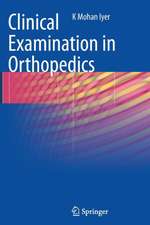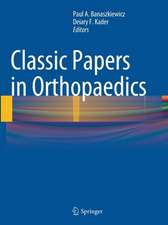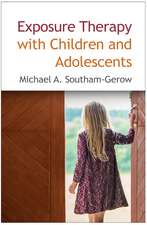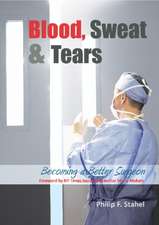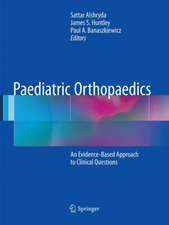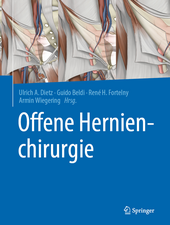Postgraduate Orthopaedics: The Candidate's Guide to the FRCS (Tr & Orth) Examination
Editat de Paul A. Banaszkiewicz, Deiary F. Kaderen Limba Engleză Paperback – 25 ian 2017
| Toate formatele și edițiile | Preț | Express |
|---|---|---|
| Paperback (2) | 696.43 lei 22-36 zile | |
| Cambridge University Press – 18 dec 2019 | 696.43 lei 22-36 zile | |
| Cambridge University Press – 25 ian 2017 | 891.16 lei 22-36 zile | +103.53 lei 6-12 zile |
Preț: 891.16 lei
Preț vechi: 938.06 lei
-5% Nou
170.52€ • 178.52$ • 141.10£
Carte disponibilă
Livrare economică 17-31 martie
Livrare express 01-07 martie pentru 113.52 lei
Specificații
ISBN-10: 1107451647
Pagini: 967
Ilustrații: 218 b/w illus. 224 colour illus. 113 tables
Dimensiuni: 219 x 276 x 40 mm
Greutate: 2.7 kg
Ediția:3Revizuită
Editura: Cambridge University Press
Colecția Cambridge University Press
Locul publicării:New York, United States
Cuprins
Part I. The FRCS (Tr & Orth) Examination: 1. General guidance Niall Breen, Benjamin W. T. Gooding and Jonathan R. A. Phillips; 2. What to read Jonathan R. A. Phillips and Benjamin W. T. Gooding; Part II. The Written Paper: 3. MCQ and EMI paper guidance Mark Dunbar and Andrew P. Sprowson; Part III. The Clinicals: 4. Introduction to clinical examination techniques Karen Robinson and Fazal Ali; 5. The short cases Andrew P. Sprowson and Mark Dunbar; 6. The intermediate cases Neil E. Jarvis, Puneet Monga and Stan Jones; 7. Shoulder clinical cases Yusuf Michla and David Cloke; 8. Elbow clinical cases Ramnadh S. Pulavarti, Mohan K. Pullagura and Charalambos P. Charalambous; 9. Hand and wrist clinical cases John E. D. Wright and John W. K. Harrison; 10. Spine clinical cases Prasad Karpe; 11. Hip clinical cases Suresh Thomas and Paul A. Banaszkiewicz; 12. Knee clinical cases Deiary F. Kader and Francois Tudor; 13. Foot and ankle clinical cases Rajesh Kakwani; 14. Paediatric clinical cases Sattar Alshryda and Philip Henman; Part IV. The General Orthopaedics and Pathology Oral: 15. General viva guidance Abhijit Bhosale and Stan Jones; 16. Hip oral core topics Sammy Hanna and Paul A. Banaszkiewicz; 17. Knee oral core topics Khaled M. Sarraf and Deiary F. Kader; 18. Foot and ankle oral core topics Kailash Devalia and Jane Madeley; 19. Spine oral core topics Joseph Butler and Alexander D. L. Baker; 20. Tumour oral core topics Thomas Beckingsale and Craig H. Gerrand; Part V. The Hand and Upper Limb Oral: 21. Hand oral core topics John W. K. Harrison and David R. Dickson; 22. Elbow oral core topics Asir Aster and Matthew Jones; 23. Shoulder oral core topics Matthew Jones and Asir Aster; 24. Brachial Plexus core topics Chye Yew Ng and David R. Dickson; Part VI. The Paediatric Oral: 25. Paediatric oral core topics Kathryn Williams and Antoine de Gheldere; Part VII. The Trauma Oral: 26. General principles, spine and pelvis William Eardley and Paul Fearon; 27. Upper limb trauma oral core topics Nirav K. Patel and Charalambos P. Charalambous; 28. Lower limb trauma oral topics Jonathan R. A. Phillips and Gunasekaran Kumar; 29. Applied trauma oral topics William Eardley, Paul Fearon and Jonathan R. A. Phillips; Part VIII. The Basic Science Oral: 30. Basic science oral topics Kevin P. Sherman; 31. Applied basic science oral topics Paul A. Banaszkiewicz and Stan Jones; Part IX. Miscellaneous Topics: 32. Surgical exposures oral core topics Jonathan Loughead and Anish Kadakia; 33. Anatomy for the FRCS (Tr & Orth) Apurv Sinha and Fazal Ali; 34. SAS doctors and the FRCS (Tr & Orth) exam Ramnadh S. Pulavarti and Kevin P. Sherman; 35. Candidates' accounts of the examination Jibu J. Joseph and Shariff Hazarika; 36. Examination failure Andrew Port and Mike Reed.
Recenzii
Descriere
The third edition of Postgraduate Orthopaedics has been fully updated, revised and expanded to meet the challenges of a continually changing exam format, providing detailed core orthopaedic knowledge and insight into tactics and pre-exam planning to increase a candidate's chance of success. Written by a core of authors chosen specifically for their knowledge of the key factors for exam success, this edition includes more illustrations and diagrams and additional exam-focused material for the trickier areas of the syllabus. The trauma chapter has been separated into four distinct sections to improve the overall trauma content. The book also includes a dedicated chapter on what books to read, reflecting the fact that this area has become more complicated in recent years, and an applied basic science chapter, which focuses on basic science viva questions in detail. This guide continues to evolve and has established itself as the definitive text for the FRCS (Tr & Orth) exam.

